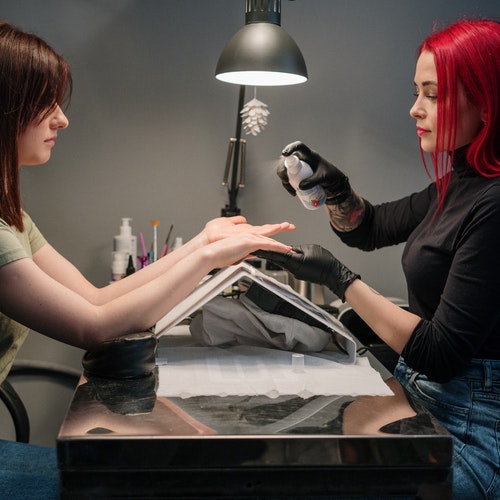Table of Contents
Are you interested in pursuing a career in the beauty industry as a nail technician? One of the crucial steps in embarking on this journey is obtaining a nail license. A nail license is a certification that permits you to legally provide professional nail care services. In this article, we will walk you through the process of obtaining a nail license, covering everything from the requirements to the training, exam, and job opportunities.
Requirements for Obtaining a Nail License
Before applying for a nail license, it is essential to meet specific requirements set by your state board of cosmetology. These requirements may vary depending on your location, so make sure to check with your state board for specific details. Here are some common requirements you might encounter:
Educational Requirements
In most states, aspiring nail technicians are required to complete a certain number of hours of training from an accredited nail technician school. The duration of these programs typically ranges from 300 to 600 hours, depending on your state’s regulations. During your training, you will learn various nail care services such as manicures, pedicures, nail art, and nail enhancements. Additionally, you may gain knowledge about nail anatomy, sanitation, and safety practices.
Age Requirements
To become a licensed nail technician, most states require you to be at least 16 years old. However, some states may require you to be 18 years old before you can apply for a nail license.
Background Check and Fingerprinting
To ensure public safety, certain states mandate that nail technicians undergo a criminal background check and fingerprinting. Keep in mind that this process may take several weeks to complete, so plan accordingly.
Application Process
Once you have met all the requirements, you can submit your application to your state board of cosmetology. Your application must include proof of education, proof of age, and any other required documents. Additionally, you will need to pay an application fee, which may vary depending on your state. It is crucial to submit your application early to allow sufficient time for processing and scheduling your exam.
Nail Technician Training
After completing the educational requirements, the next step is to enroll in a nail technician program. Nail technician training aims to equip you with the knowledge and skills necessary for success in the industry. Here are some things you can expect to learn during your training:
Types of Nail Technician Programs
Nail technician programs are available in various formats, including in-person, online, or hybrid options. In-person programs involve classroom-based training, while online programs provide distance learning opportunities. Hybrid programs combine both in-person and online learning. Choose a program that suits your learning style and schedule.
Topics Covered in Nail Technician Training
During your training, you will cover a wide range of topics to ensure you have the necessary knowledge and skills to provide professional nail care services. Some common topics include:
- Nail anatomy and physiology
- Sanitation and safety practices
- Basic nail care services such as manicures, pedicures, and nail enhancements
- Advanced techniques such as acrylics, gels, and nail art
- Nail diseases and disorders
- Client consultation and communication skills
Hands-on Experience and Practice
Nail technician training places a strong emphasis on hands-on experience and practice. You will have the opportunity to work on real clients under the guidance of a licensed instructor. This invaluable experience will not only help you develop your skills but also build confidence in providing professional nail care services. Additionally, you will learn how to effectively interact with clients and establish strong relationships.
Passing the State Board Exam
Upon completing your nail technician training, the final step is to pass the state board exam. The state board exam is a comprehensive assessment that evaluates your knowledge and skills in providing professional nail care services. Here’s what you need to know about the state board exam:
Overview of the State Board Exam
The state board exam typically comprises a written and practical exam. The written exam tests your understanding of nail care services, safety and sanitation practices, and state regulations. The practical exam assesses your ability to perform basic nail care services such as manicures, pedicures, and nail enhancements. You will demonstrate these skills on a live model under the supervision of a licensed examiner.
Tips for Passing the Exam
To enhance your chances of succeeding in the state board exam, here are some tips to keep in mind:
- Regularly study and review your notes
- Consistently practice your skills and techniques
- Familiarize yourself with the exam format and requirements
- Arrive early on the exam day to allow ample time for preparation and setup
- Adhere to all safety and sanitation protocols
- Communicate clearly with your client and examiner
- Stay calm and focused throughout the exam
Common Mistakes to Avoid
Many nail technician students make common mistakes when taking the state board exam, which can cost them valuable points or even result in failing the exam. Here are some mistakes to avoid:
- Failing to follow safety and sanitation protocols
- Neglecting to sanitize your tools and work area
- Rushing through the service without allocating enough time for each step
- Poor communication with your client and examiner
- Not following the correct technique or procedure for each service
By following these tips and avoiding common mistakes, you can significantly increase your chances of passing the state board exam and obtaining your nail license.
Remember, obtaining a nail license is an exciting journey that requires dedication, perseverance, and a genuine passion for the beauty industry. With the right education, training, and preparation, you can embark on a rewarding career as a licensed nail technician. Good luck!





